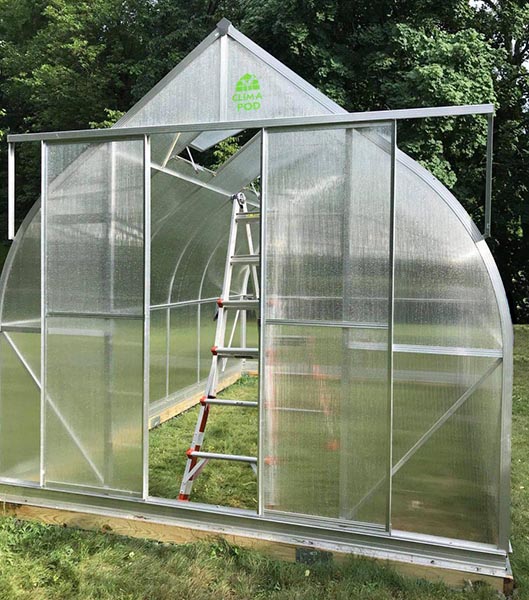January in the greenhouse
Most people consider January a dormant time in the greenhouse. If you have already minimized your heat loss, you have already insulated the heck out of them, the weather stripping, all the bubble wrap in the paneling and the foam insulation, the two inch foam insulation where they have reflective coating on them. If you have already done all that, what else can we do? Well, we can add some heat sinks. Those are ideal because they work the best with barrels, black steel drums filled with water all along the north side, and maybe holding benches throughout the rest of your greenhouse or anything to kind of accumulate some of that heat in the greenhouse during the day and release that at night, but you have already done all that.
Let’s grow something in the greenhouse in january. So what we are going to try to grow is basically greens, salad greens, tomatoes and peas. So we are looking at lettuce, peas, spinach and the greens from turnips. So we are going to need to maximize our light and we do that by anything not painted black. Anything that is not painted black to absorb heat needs to be white or a reflector. It needs to be that reflector on the foam and if we need some more like let’s say on the halfway up the north heat of the greenhouse, if you got the sun coming in here, you got the wall that is already insulated, what about that heat?
Adding a Heat Storage
Hopefully, we have insulated about half of it and let’s put reflectors on that half. You don’t have to go and do something fancy. You don’t have to spend a lot of money on it. You could use aluminum foil or we could use those – if you have winter reflectors in your car that you use during the summer, the kind that you pop up and stick up in your windshield to keep the car from getting so freaking hot. Well, you are probably not using those during the winter or if you are, they are so cheap. You can grab two or three of them for a couple bucks a piece and just put them in your greenhouse. They are like a little tanning bed for your plants and just set them all around the greenhouse shining on that little area where it could be growing. We have talked before about having a greenhouse inside of a greenhouse. So if we are doing that and let’s say we got all those little you know pop-ups these little 6 by 6 pop ups, and we’ve moved out tracing and we are going to try to grow some lettuce in there, we can hopefully with the sun coming in and all the reflectors were popping enough sun in their work form. If not, we are going to throw a cheap light in there. It doesn’t need to be a fancy expensive grow light.

We will just get a fluorescent light with some day time bulbs or you know, we can put or we can mix the bulbs. If you are planting on your shelves, it might be a good time to use your little heat pads and put your little seedling mats down and put your pots. If you have pots in the greenhouse and you have heat sinks, let’s say we got our barrels setting here, the are black, they are warmer in the day and they release that heat at night, put the pot on the barrel.

It is like if you heat it, it will heat the roots. So you can do some things to try to compensate for the short days of the little light. One things about those plants, if you got the reflectors, don’t put the plants right up against the reflectors because when it gets really hot in the afternoon and it is amazing when you want the greenhouse you know, it is 30˚ outside and there is snow on the ground, which reflects the light very well too, and it is 100˚ in your greenhouse. So you don’t want to burn your plants. The wonderful thing about the lettuce if you kill it, it is not the biggest loss in the world, but it is kind of fun to grow and have something going on you know, in the greenhouse during the winter. The black paint is sometimes an issue for folks. If it is a barrel, only paint the south facing side black. But if you got the reflectors everywhere, I would recommend and go ahead and paint the whole darn thing black. In that way, it is getting the reflector coming in. So now a lot and it is kind of weak and you know, a lot going on in January, but you can do something or aquaponics and let them grow a year round. Plus, all that water helps keep your greenhouse warm.






